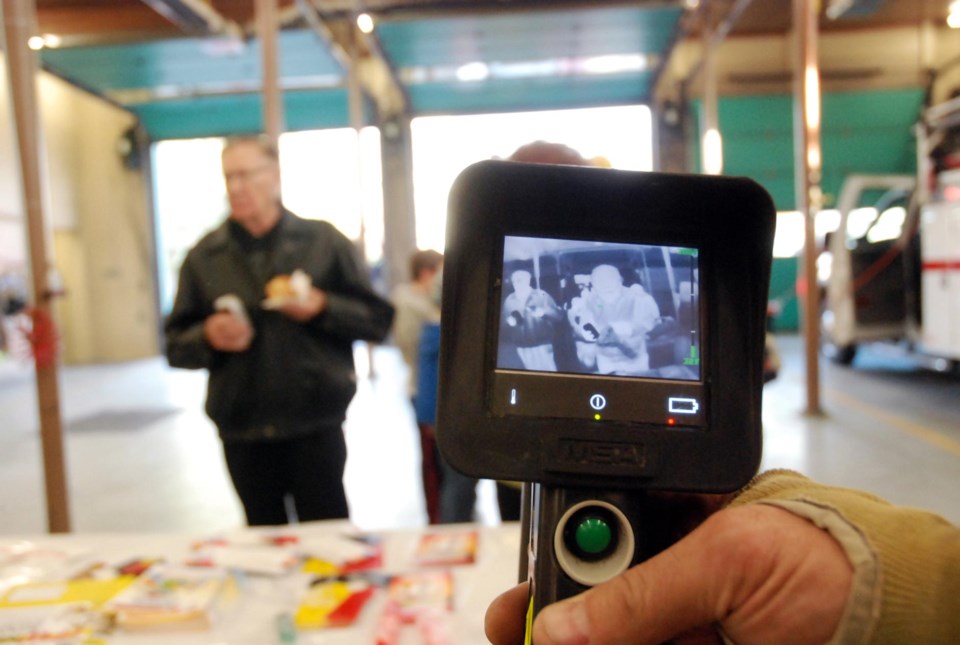There are a few new things the Humboldt Fire Department has to be proud, not the least of which is some new technology and fire chief Mike Kwasnica's recent specialized training.
Kwasnica was invited by Canadian National (CN) Railway to attend a tank car training course at the Security & Emergency Training Centre (SERTC) from Sept. 29 to Oct. 3. in Pueblo, Colo. The weeklong course focused on a multitude of things from tank car construction to safety features, to how they're built.
"In the event of a derailment, the training will make our plan of attack better," said Kwasnica. "We learned how to identify cars from a distance, how to stop leaks and we went over tank car markings, different locomotives, and CN's protocols."
Of course, there was much more involved in Kwasnica's course. Half of the week was spent in the class while the other half was spent out in the training grounds. Kwasnica and his classmates learned how to do a site assessment, a damage assessment, and how to read a train manifest. At the end of the week, they had to a final assessment that entailed a derailment scenario in which they had to make an assessment, come up with a plan, and stop the leaks.
"I'm not scared of derailments anymore. I learned a lot," said Kwasnica. "It gives me a lot better knowledge so that if and when it happens here, we can work with CN in a better way and understand what they're doing."
Kwasnica was lucky to be invited at all, since only about three people from Canada are invited each year. There were about 40 people overall, ranging from B.C. to Nova Scotia, to Baton Rouge, La., with a wide range of skills. Some were just volunteer firefighters with general knowledge while others were HAZMAT technicians with the necessary training.
"It probably has to do with where we're located and what areas have the most train traffic," he speculated.
According to Kwasnica, he was pleasantly surprised when he learned about the construction and built-in safety features of the tank cars. Though the DOT-111 cars are the ones that have been causing so much trouble lately, they still have a lot of safety features built in. The problem is that while the models of cars are built the same, the products being shipped (e.g. petroleum oil) differ from province to province. This means that the DOT-111 would have a harder time accommodating all the different types of products being shipped.
Nevertheless, there are safety protocols in place to mitigate damage should another accident happen like what was recently been seen in Lac Mégantic. Even though the training Kwasnica and the others went through will prepare them, it doesn't mean they'll be the ones that have to be on site of a derailment accident.
"It'll keep us from doing something we're not supposed to do," said Kwasnica. "It'll prevent us from doing something dangerous and keep us out of harm's way."
Kwasnica won't be the only benefiting from this training course either. In cooperation with Ryan Thiessen, a CN dangerous goods officer, they will be conducting a condensed training session over one night using Thiessen's mobile training trailer.
Along with this training, the fire department is also enjoying the benefits of new and improved technology. For one, they were able to purchase a new thermal imaging camera as well as a new app alert system.
The camera is the same model as the old one they have, but includes more features such as detecting the distance of things and zoom capability.
"It's just a very important tool and other one was getting old," said Kwasnica. "There were times when we could've used more than one."
This type of camera can detect heat signatures up to about 350 degree Fahrenheit and can see imprints of heat signatures left behind. It can also detect hot spots on electrical wiring.
The camera cost them $13,000. While it wasn't cheap, it was necessary. Their new alert system app, however, only cost them $11 per year per device. The way it works is that when a fire or an emergency call goes out, each member gets an alert on their phone to which they can respond available, unavailable, arrived, etc.
"Firefighters can respond if they can come or not come so that the fire chief (and everyone else) will know who's available," said Darrell Wickenhauser, the deputy fire chief. "It will also be able to show a route (on a map) to the paged address from where they are, even out in rural areas."
Once they respond, their locations and responses are viewable on the map to show other members how far away they are and what their status is. Even if a member is in a different country, they can receive the alert on their phone and respond as long as their phones are turned on. Other members will still be able to view where they are, regardless of the distance.
"It's geographically not limited," said Kwasnica. "It can be hooked up to land lines, cell phones, smart phones, etc."
The app itself is a backup system and was installed after a storm knocked out their regular paging system earlier in the summer. With this new system, all members will have multiple forms of alerts, which is highly useful since the majority of the fire department is made up of volunteer fire fighters with their own regular full-time jobs.




